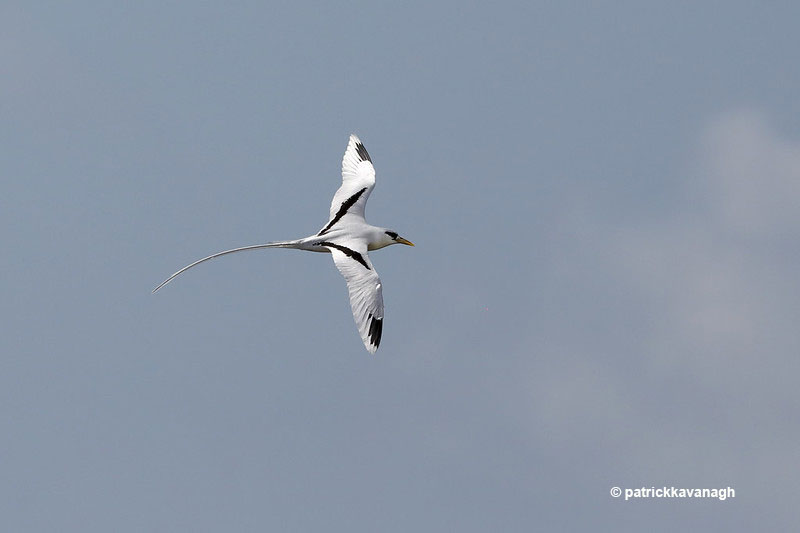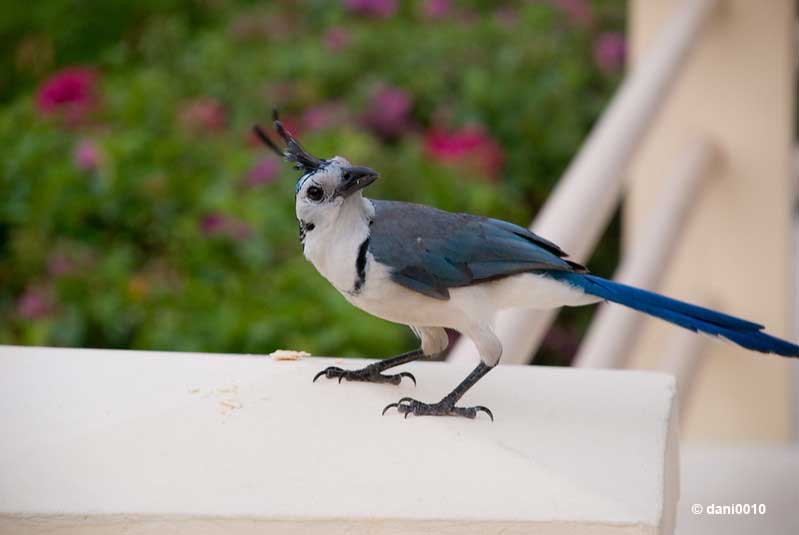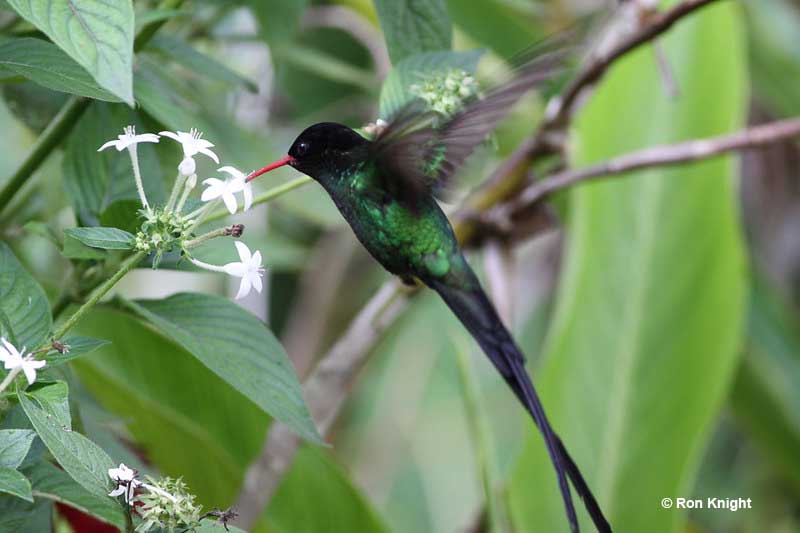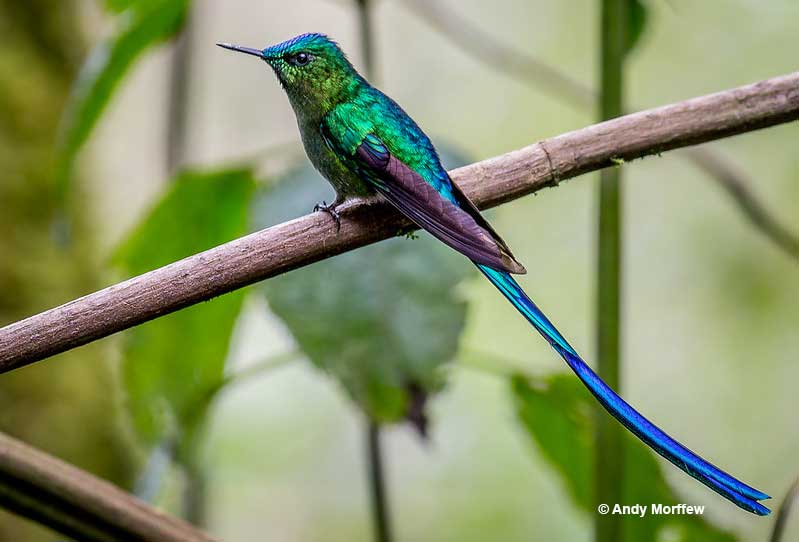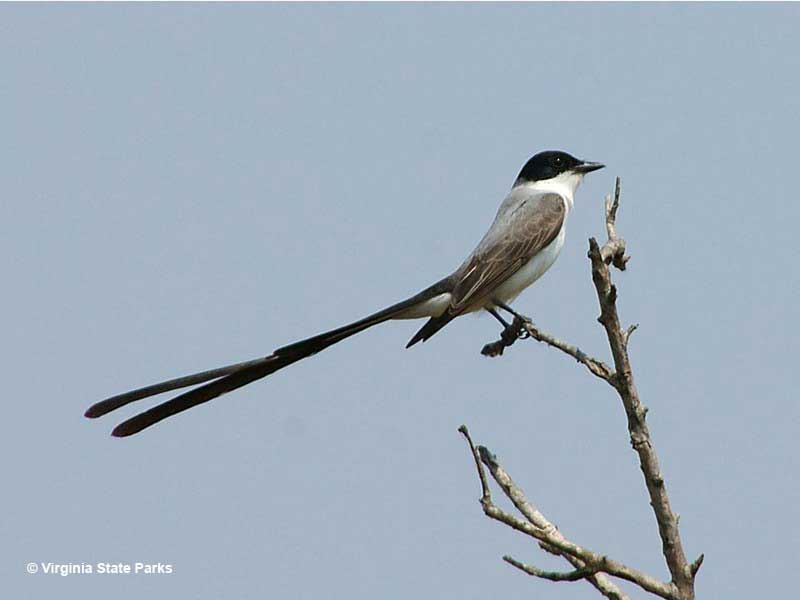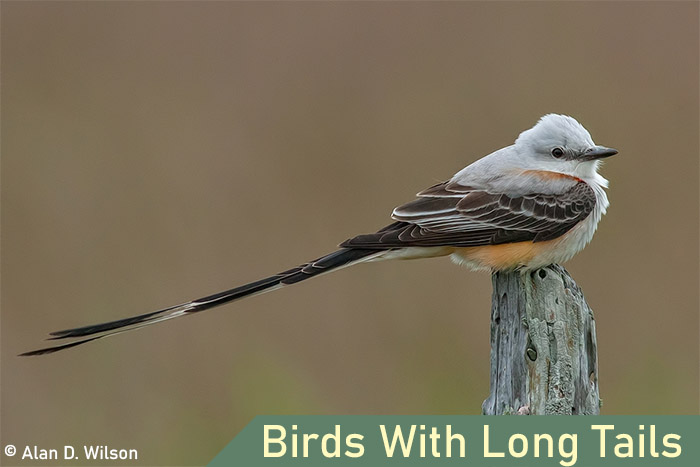
Did you see a bird with long tail? Why do some birds have especially long tails?
Birds have long tails for several reasons, including balance, steering and communication.
Long tails help birds maintain balance while in flight, and provide them with the ability to make quick turns and adjustments.
Tails are also used for display and communication, serving as a visual indicator of a bird’s health and social status, and as a means of attracting a mate. In some species, long tails can also serve as a means of deterring predators or intimidating rivals.
Here are our favorite birds with long tails.
On this page
- 13. White-tailed Tropicbird
- 12. White-throated Magpie-Jay
- 11. Red-billed Streamertail
- 10. Common Pheasant
- 9. Long-tailed Sylph
- 8. Fork-tailed Flycatcher
- 7. Resplendent Quetzal
- 6. Scissor-Tailed Flycatcher
- 5. Long-tailed Duck
- 4. Long-tailed Jaeger
- 3. Magnificent Frigatebird
- 2. Greater Roadrunner
- 1. Black-billed Magpie
13. White-tailed Tropicbird
The White-tailed Tropicbird is a large, fancy seabird that lives in subtropical and tropical oceans. In North America, they breed on Bermuda and in the Caribbean Sea. This species wanders over large areas in search of feeding schools of tuna and dolphins that drive squid and small fish to the surface.
For this reason, we mostly see this bird on pelagic trips that visit the warm waters of the Gulf Stream. White-tailed Tropicbirds also live in warm waters of the Indian and Pacific Oceans.
Adult White-tailed Tropicbirds are large, white seabirds with a small black mask, and black patches on their wings. They also have a stout yellow beak, and a very long, narrow white tail that streams out behind them. On account of their tail, in Bermuda, this species is also known as the “Longtail”.
Juvenile White-tailed Tropicbirds have much shorter, pointed tails.
12. White-throated Magpie-Jay
The White-throated Magpie-Jay is a big jay species that lives in tropical dry forest habitats. This fancy jay occurs from Jalisco in western Mexico south to western Costa Rica. It’s a pretty common bird species that often occurs in noisy flocks of ten or so birds.
These spectacular birds spend a lot of their time using their stout beaks to eat fruits and insects.
White-throated Magpie-Jays can also become tame and took for handouts in restaurants, especially in Costa Rica. While birding in Costa Rica, when I see these big birds, I am reminded of oversized, extra-fancy Blue Jays!
Like the Blue Jay, the White-throated Magpie-Jay is blue above and white below with a narrow black “necklace”. However, the magpie-jay has a fancier crest with curved black plumes, a whiter face, and a much longer tail.
In flight, their long tails sometimes ripple as they fly between big tropical trees.
11. Red-billed Streamertail
The Red-Streamertail is a fair-sized, spectacular hummingbird that only lives in Jamaica. On the island, this Jamaican endemic occurs in a wide variety of habitats including montane forest, lowland forest, second growth, and other wooded habitats. It doesn’t occur in arid habitats on the easternmost part of the island.
Like other hummingbirds, Red-billed Streamertails take nectar from many flowers and sally to catch some insects. They are also regular visitors to hummingbird feeders.
Males of this fancy species are completely dark green with a black cap, and a spectacular, black, long forked tail. They also have a long, slightly curved red beak with a small black tip.
In flight, the long tail of the Red-billed Streamertail flutters behind it! Females lack the fancy tail and are fairly plain hummingbirds that are green above and pale below. They also have some green spotting on their underparts, a dark cap, and a dark beak.
10. Common Pheasant
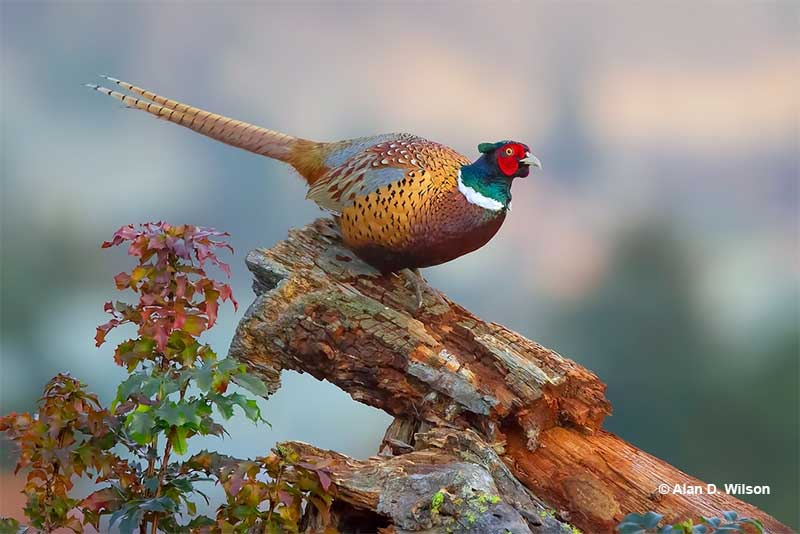
The Common Pheasant is a good-sized, chicken-like bird with a long, pointed tail. It has a big range that includes northern China, central Asia, and much of Europe. This species was also introduced to other parts of the world, including North America.
We see this pheasant in grassland habitats in various parts of southern and central Canada, and many parts of the USA.
Also known as the “Ring-necked Pheasant,” males have a dark, purple-green head with a short crest and red face. They also have a narrow, white collar, stout pale curved beak, and rich brown and copper-colored underparts. Their back and wings are brown and dark green but their most prominent feature is their long, pointed tail.
The male’s tail is longer than his body and is pale brown with black bands. The female pheasant’s tail is shorter and she is a much plainer, mottled brown and buff bird.
9. Long-tailed Sylph
The Long-tailed Sylph is a fancy hummingbird of Andean edge habitats. This beautiful bird is common in gardens, forest edge, and scrubby habitats from 3,000 feet to as high as 9,000 feet. They occur in the mountains from Venezuela south to Bolivia and are frequently seen at flowering bushes and feeders.
Male Long-tailed Sylphs are medium-sized, dark green hummingbirds with a shining, long, straight, blue-green tail. These eye-catching hummingbirds also have a straight, black beak, and a hint of a crest.
In flight, their long, iridescent tail can ripple behind them!
Female Long-tailed Sylphs are much plainer. They are green above, have some green speckling on a pale throat, a small pale spot behind their eyes, and a tawny belly. Females also have a longish tail but not as long as that of the male.
8. Fork-tailed Flycatcher
The Fork-tailed Flycatcher is a striking flycatcher species with an extra-long, black forked tail. These kingbird relatives breed in tropical savannahs and other open grassy habitats in southern Mexico, parts of Central America, and many regions in South America.
Birds that nest in Argentina also migrate to the Amazon for the Austral winter. Every year, a few of those birds fly a bit too far and make it all the way to North America! These rare vagrants can occur just about anywhere but tend to be found in late fall in coastal areas and other migrant hotspots.
Both sexes of the Fork-tailed Flycatcher look alike, but males have longer tails. They have a black cap, wings, and tail, a pale gray back, and bright white underparts. Like many other flycatchers, Fork-tailed Flycatchers sally from a perch for insects. During migration and winter, they also hover to pick small fruits from tropical trees!
7. Resplendent Quetzal
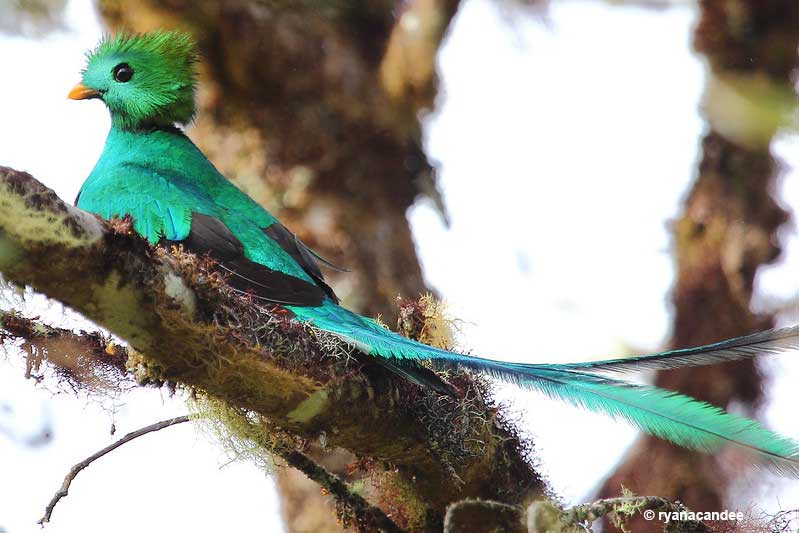
Resplendent Quetzals are magnificent birds from the Trogon family. Although they are native to Central America, these birds have made quite an impression on many people.
The beautiful Resplendent Quetzals live in areas with higher elevation, in rainforests. Unfortunately, due to the restrictive nature of their habitat, there are no certain ways to monitor their numbers, but these birds are considered to be near-threatened.
Both males and females look similar at first sight – both have shiny green plumage with red undersides and are roughly the same size, but males have a crest on their heads.
6. Scissor-Tailed Flycatcher
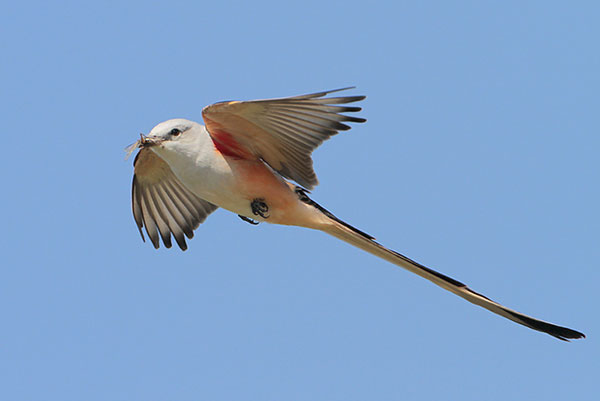
Scissor-tailed Flycatcher. Photograph © Greg Lavaty.
The Scissor-tailed Flycatcher is state bird of Oklahoma. A bird species found in the central and southern United States, Mexico, and Central America. It is named for its distinctive, elongated tail, which can reach up to 9 inches in length. The tail is comprised of two elongated central feathers that are stiff and have a distinctive, scissor-like appearance.
In addition to its long tail, the Scissor-tailed Flycatcher is also known for its bright plumage, with a gray head and neck, a white underbelly, and a rosy-pink wash on its back and wings. The bird feeds on insects and small invertebrates, which it catches while in flight.
The Scissor-tailed Flycatcher’s long tail plays a role in its flight, helping it to maintain balance and stability as it moves through the air. The long tail feathers can also be used in courtship displays to attract a mate, as well as to intimidate other birds and deter potential predators.
5. Long-tailed Duck
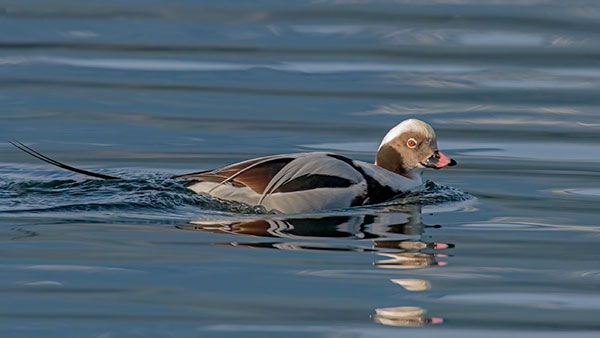
Long-tailed Duck. Photograph © Alan Wilson.
The Long-tailed Duck, also known as the Oldsquaw, is a species of sea duck found in the Arctic and sub-Arctic regions of North America and Eurasia. It is named for its distinctive long tail, which can reach up to 6 inches in length.
The Long-tailed Duck has a black head, white neck, and a dark back and wings, with a distinctive white patch on the sides of its face. In breeding plumage, male Long-tailed Ducks have a distinctive crest on their head, as well as white feathers on their breast and sides.
The Long-tailed Duck is a diving bird that feeds on mollusks, crustaceans, and small fish, which it captures by diving underwater. The bird’s long tail helps it to steer and maneuver as it dives and swims in the water. The tail is also used in courtship displays, with the male raising and fanning his tail feathers to attract a mate.
In the U.S., they are found in Wisconsin and Michigan, around the Great Lakes, but they breed in Canada.
4. Long-tailed Jaeger
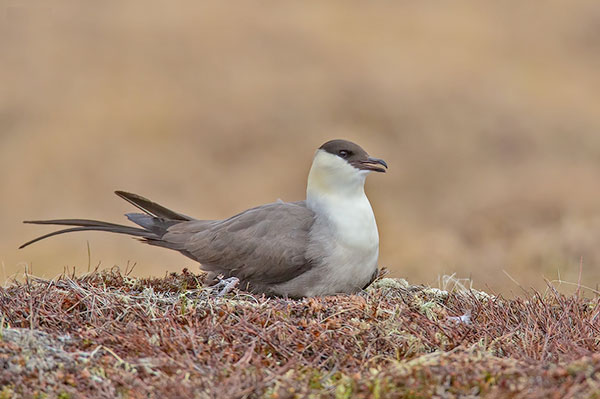
Long-tailed Jaeger. Photograph © Alan Wilson
The Long-tailed Jaeger is a seabird species that belongs to the family of gulls and terns. It is named for its distinctive long tail, which can reach up to 10 inches in length. The Long-tailed Jaeger is a highly agile bird that is capable of hovering and diving, making it well adapted to a life at sea.
The Long-tailed Jaeger is a migratory bird that breeds in the Arctic and sub-Arctic regions of North America and Eurasia, and wintering in the Southern Ocean and the North Pacific. It has a distinctive appearance, with a dark back, a white underbelly, and a long, slender tail.
3. Magnificent Frigatebird
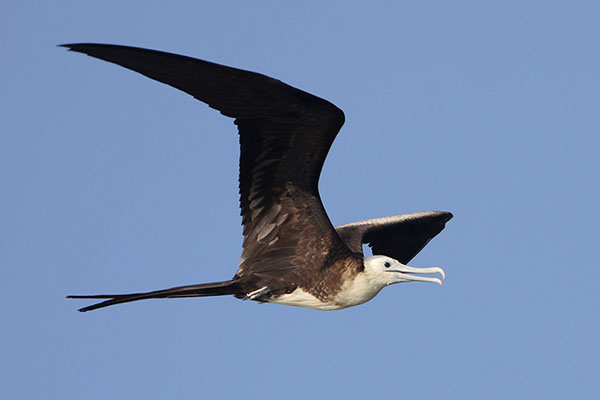
Magnificent Frigatebird. Photograph © Greg Lavaty
The Magnificent Frigatebird is a large seabird species that belongs to the family of pelicans and gannets. It is named for its distinctive, elongated tail, which can reach up to 12 inches in length. The Magnificent Frigatebird is a graceful flier that is capable of soaring for long periods of time without flapping its wings.
The Magnificent Frigatebird has a distinctive appearance, with a long, slender body, a long, narrow wingspan, and a long, forked tail. The bird is found in tropical and subtropical regions around the world, including the Atlantic, Pacific, and Indian Oceans.
2. Greater Roadrunner
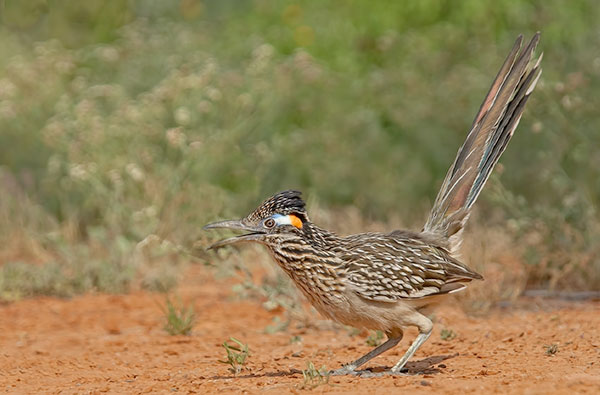
Greater Roadrunner. Photograph © Alan Wilson
The Greater Roadrunner is a large bird species that belongs to the cuckoo family and is native to the southwestern United States and Mexico. It is named for its habit of running, rather than flying, and is known for its distinctive, long tail, which can reach up to 12 inches in length.
The Greater Roadrunner has a distinctive appearance, with a long, slender body, a long, narrow tail, and distinctive crest on its head. The bird is a ground-dwelling species that feeds on a variety of prey, including insects, small reptiles, and small mammals.
1. Black-billed Magpie
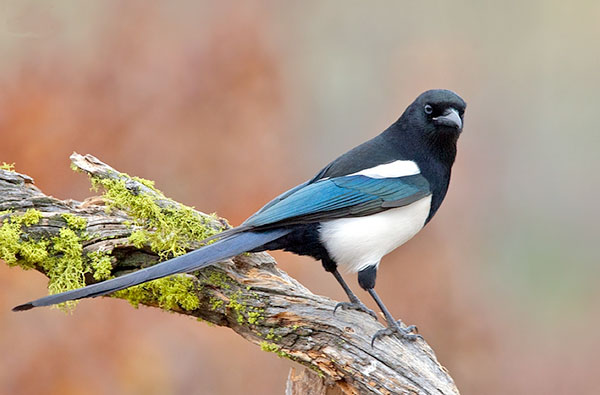
Black-billed Magpie. Photograph © Alan Wilson
The Black-billed Magpie is a large bird species belonging to the crow family and is native to western North America. It is known for its distinctive, long tail, which can reach up to 12 inches in length.
The Black-billed Magpie has a distinctive appearance, with a glossy black head, neck, and tail, and white underbelly. The bird is highly social and is often seen in flocks, foraging for food on the ground.
Do you know some bird with long tail that’s not on this list? Let us know in the comments.


